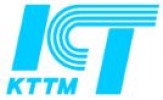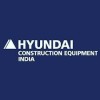Filter interviews by
Tecosim Engineering Services Interview Questions and Answers
12 Interview questions
Spring back effect is the tendency of a material to return to its original shape after being deformed.
Spring back effect occurs in materials like metals, plastics, and composites.
It is caused by the release of internal stresses that were introduced during the forming process.
Factors affecting spring back include material properties, forming process, and tooling design.
Examples include metal sheets returning to the...
Types of fits include clearance fit, interference fit, and transition fit, each offering different advantages.
Clearance fit: allows for easy assembly and disassembly, used in applications where relative motion is required (e.g. sliding fits)
Interference fit: provides a tight connection with no relative movement, used in applications where rigidity is important (e.g. press fits)
Transition fit: offers a compromise b...
Product design guidelines are principles and standards that help ensure the quality, functionality, and manufacturability of a product.
Consider the target audience and their needs
Ensure the design is user-friendly and intuitive
Follow industry standards and regulations
Optimize for manufacturability and cost-effectiveness
Prioritize safety and durability
Incorporate feedback from stakeholders and end-users
Use sustaina...
GD&T is a system for defining and communicating engineering tolerances.
GD&T stands for Geometric Dimensioning and Tolerancing
It is used to define the allowable variations in form, size, and orientation of part features
GD&T symbols are used on engineering drawings to specify the desired tolerances
Proper implementation of GD&T can improve the quality and manufacturability of a design
Explicit methods calculate state variables directly, while implicit methods involve solving equations iteratively.
Explicit methods are simpler and easier to implement, e.g., Forward Euler method.
Implicit methods are more stable for stiff problems, e.g., Backward Euler method.
Explicit methods require smaller time steps for stability, while implicit methods allow larger time steps.
Implicit methods often require solv...
The stress-strain graph illustrates the mechanical behavior of ductile and brittle materials under load.
Ductile materials exhibit a gradual increase in stress and strain, allowing for significant deformation before failure.
Brittle materials show a steep slope in the elastic region and fail suddenly with little to no plastic deformation.
The yield point in ductile materials indicates the transition from elastic to p...
Elements in CAE include 1D, 2D, and 3D types, each serving specific modeling purposes in simulations.
1D Elements: Used for beams and trusses (e.g., line elements in structural analysis).
2D Elements: Used for surfaces (e.g., triangular or quadrilateral elements in shell analysis).
3D Elements: Used for solid modeling (e.g., tetrahedral or hexahedral elements in volumetric analysis).
Special Elements: Include axisymme...
GD&T (Geometric Dimensioning and Tolerancing) is commonly used in fixture design to ensure accurate and precise manufacturing processes.
GD&T helps define the allowable variations in the dimensions and geometric features of a part, which is crucial in fixture design.
Fixtures are designed to hold and position workpieces during manufacturing processes, and GD&T ensures that the fixtures are capable of achieving the r...
GD&T provides precise communication of design requirements, while bonus tolerance allows for additional variation beyond basic tolerances.
GD&T (Geometric Dimensioning and Tolerancing) ensures clear and precise communication of design requirements
It allows for more detailed control over form, orientation, location, and profile of features
Bonus tolerance is an additional tolerance that can be applied to a feature be...
The type of clamp and locator used in a checking fixture depends on the specific application and requirements.
The clamp and locator should be chosen based on the part being checked and the desired level of accuracy.
Common types of clamps include toggle clamps, pneumatic clamps, and hydraulic clamps.
Locators can be pins, blocks, or other features that ensure proper positioning of the part.
The checking fixture may a...
Tecosim Engineering Services Interview Experiences
18 interviews found
(5 Questions)
- Q1. Implementation of gd&t
- Q2. Advantage gd&t and what is bonus tolerance
- Ans.
GD&T provides precise communication of design requirements, while bonus tolerance allows for additional variation beyond basic tolerances.
GD&T (Geometric Dimensioning and Tolerancing) ensures clear and precise communication of design requirements
It allows for more detailed control over form, orientation, location, and profile of features
Bonus tolerance is an additional tolerance that can be applied to a feature beyond ...
- Q3. Types of fits and advantages
- Ans.
Types of fits include clearance fit, interference fit, and transition fit, each offering different advantages.
Clearance fit: allows for easy assembly and disassembly, used in applications where relative motion is required (e.g. sliding fits)
Interference fit: provides a tight connection with no relative movement, used in applications where rigidity is important (e.g. press fits)
Transition fit: offers a compromise betwee...
- Q4. Expalain spring back effect in details
- Ans.
Spring back effect is the tendency of a material to return to its original shape after being deformed.
Spring back effect occurs in materials like metals, plastics, and composites.
It is caused by the release of internal stresses that were introduced during the forming process.
Factors affecting spring back include material properties, forming process, and tooling design.
Examples include metal sheets returning to their or...
- Q5. What are the product designguidelines
- Ans.
Product design guidelines are principles and standards that help ensure the quality, functionality, and manufacturability of a product.
Consider the target audience and their needs
Ensure the design is user-friendly and intuitive
Follow industry standards and regulations
Optimize for manufacturability and cost-effectiveness
Prioritize safety and durability
Incorporate feedback from stakeholders and end-users
Use sustainable m...
Skills evaluated in this interview
I applied via Referral
(2 Questions)
- Q1. Above experience and personal info
- Q2. Above expectations
Interview Preparation Tips
(2 Questions)
- Q1. Self introduction
- Q2. Key project and learning
(1 Question)
- Q1. 1. Basically on Engineering and CAE
(1 Question)
- Q1. Salary Discussion
I applied via Campus Placement and was interviewed in Dec 2022. There were 4 interview rounds.

(1 Question)
- Q1. As I am mechanical engineering i was questioned about my basic knowledge about FEA, SOM, material properties etc. The job was based on analysis so some questions related to ANSA software was also asked Wh...
(1 Question)
- Q1. I was given with industry level CAD model to be meshed under ANSA
(1 Question)
- Q1. HR round is one of coolest round where hr will be asking about your family schooling, hobbies and most asked questions tell me about yourself
Interview Preparation Tips
I applied via Referral and was interviewed in Dec 2022. There were 2 interview rounds.

(2 Questions)
- Q1. Material details stress strain curve etc.
- Q2. Tool test for meshing and analysis tool
Interview Preparation Tips

(2 Questions)
- Q1. It's all about your work experience
- Q2. Design standards and about your past experience
(1 Question)
- Q1. Learn quickly to do the given task
(1 Question)
- Q1. It's all about your past work experience and how goos fit for the organisation
Interview Preparation Tips
I applied via Naukri.com and was interviewed in Mar 2022. There were 3 interview rounds.

(8 Questions)
- Q1. Explain stress strain graph for ductile and brittle material?
- Q2. Difference between Engineering and True Stress strain?
- Q3. Cantilever beam at one end point load sfd and bmd
- Q4. Different meshing criteria and it's values and meaning?
- Q5. Different types of elements and it's example?
- Ans.
Elements in CAE include 1D, 2D, and 3D types, each serving specific modeling purposes in simulations.
1D Elements: Used for beams and trusses (e.g., line elements in structural analysis).
2D Elements: Used for surfaces (e.g., triangular or quadrilateral elements in shell analysis).
3D Elements: Used for solid modeling (e.g., tetrahedral or hexahedral elements in volumetric analysis).
Special Elements: Include axisymmetric ...
- Q6. Dof for shell and solid elements?
- Q7. Explicit and implicit difference?
- Q8. Static and dynamic difference?
(2 Questions)
- Q1. Salary Expectations?
- Q2. Long term Commitments towards company?
Interview Preparation Tips
- FEA
- HyperMesh
Skills evaluated in this interview
I applied via Company Website and was interviewed in Jan 2022. There were 3 interview rounds.
(1 Question)
- Q1. Technical tool test on Nx or Catia
(2 Questions)
- Q1. Tell about personal and some design related technical question
- Q2. Type of clamp and locator Type of checking fixture
- Ans.
The type of clamp and locator used in a checking fixture depends on the specific application and requirements.
The clamp and locator should be chosen based on the part being checked and the desired level of accuracy.
Common types of clamps include toggle clamps, pneumatic clamps, and hydraulic clamps.
Locators can be pins, blocks, or other features that ensure proper positioning of the part.
The checking fixture may also i...
(1 Question)
- Q1. Personal interrogation
Interview Preparation Tips
I applied via Company Website and was interviewed in Jan 2022. There were 3 interview rounds.
(1 Question)
- Q1. Tool test of part drawing in software
- Ans.
Tool test of part drawing in software is a process to ensure accuracy and functionality of the software.
Tool test involves checking the software's ability to read and interpret part drawings
It ensures that the software can accurately generate tool paths based on the part drawing
Examples of software used for tool test include SolidWorks, AutoCAD, and CATIA
(1 Question)
- Q1. Technical discussion with the manager Why m joing this firm all
- Ans. The working conditions and better
(6 Questions)
- Q1. What are your salary expectations?
- Q2. Why should we hire you?
- Q3. Share details of your previous job.
- Q4. Why are you looking for a change?
- Q5. What are your strengths and weaknesses?
- Q6. Tell me about yourself.
Interview Preparation Tips
Skills evaluated in this interview
Top trending discussions






Tecosim Engineering Services Interview FAQs
Tell us how to improve this page.
Tecosim Engineering Services Interviews By Designations
- Tecosim Engineering Services Project Engineer Interview Questions
- Tecosim Engineering Services Design Engineer Interview Questions
- Tecosim Engineering Services Senior Design Engineer Interview Questions
- Tecosim Engineering Services BIW Design Engineer Interview Questions
- Tecosim Engineering Services Process Simulation Engineer Interview Questions
- Tecosim Engineering Services Production Engineer Interview Questions
- Tecosim Engineering Services Junior Project Engineer Interview Questions
- Tecosim Engineering Services Trainee Interview Questions
- Show more
Interview Questions for Popular Designations
Overall Interview Experience Rating
based on 7 interview experiences
Difficulty level
Duration
Interview Questions from Similar Companies
Tecosim Engineering Services Reviews and Ratings
based on 116 reviews
Rating in categories
|
Design Engineer
120
salaries
| ₹2.7 L/yr - ₹7.8 L/yr |
|
Senior Design Engineer
43
salaries
| ₹4.9 L/yr - ₹10.5 L/yr |
|
Lead Engineer
28
salaries
| ₹9 L/yr - ₹14 L/yr |
|
CAE Engineer
28
salaries
| ₹2.5 L/yr - ₹6.2 L/yr |
|
Project Engineer
22
salaries
| ₹3.6 L/yr - ₹7.7 L/yr |

Gilbarco Veeder Root

Kirloskar Toyota Textile Machinery

L&T–MHI Power Boilers

Hyundai Construction Equipment
- Home >
- Interviews >
- Tecosim Engineering Services Interview Questions















